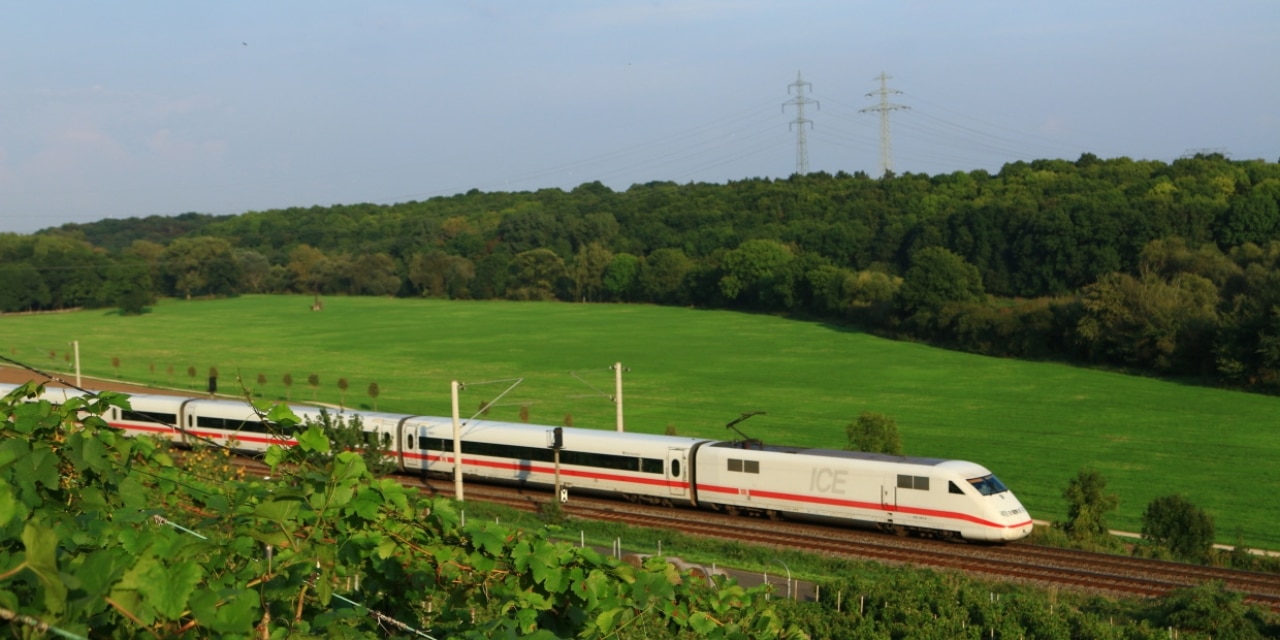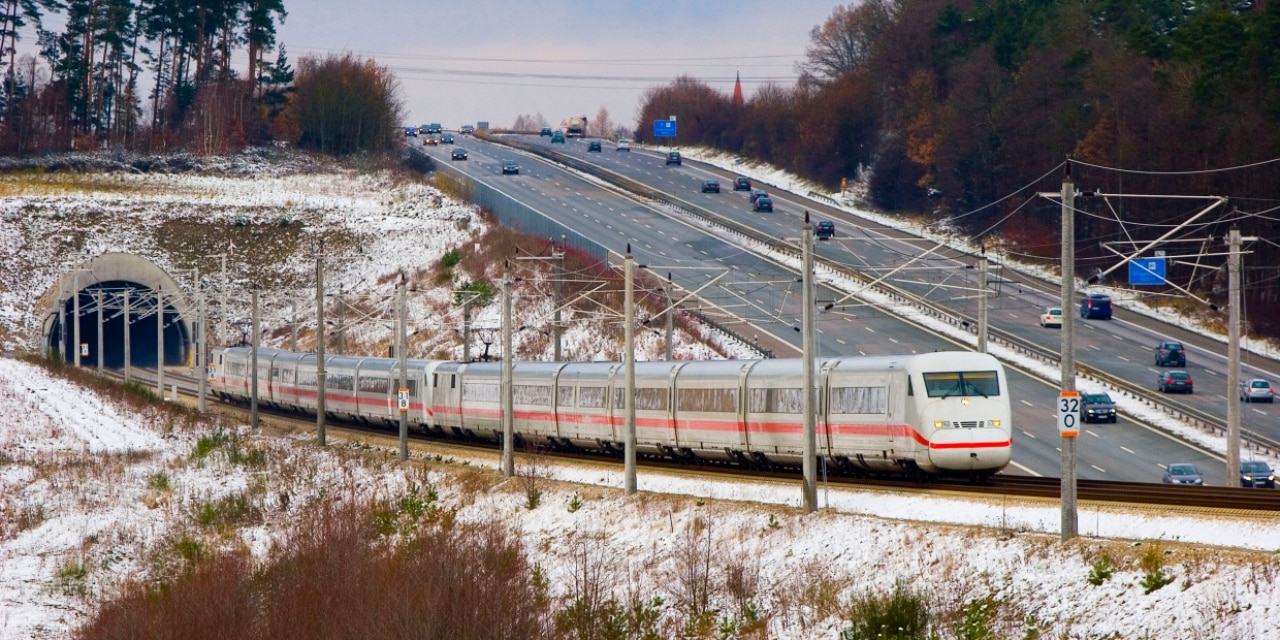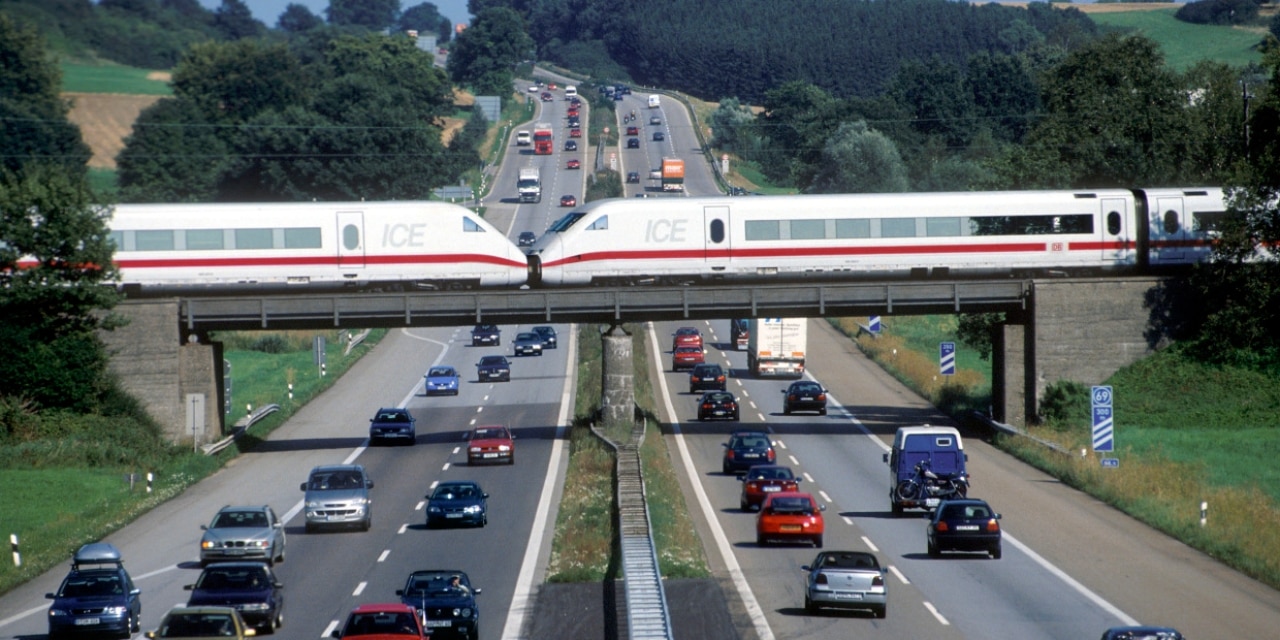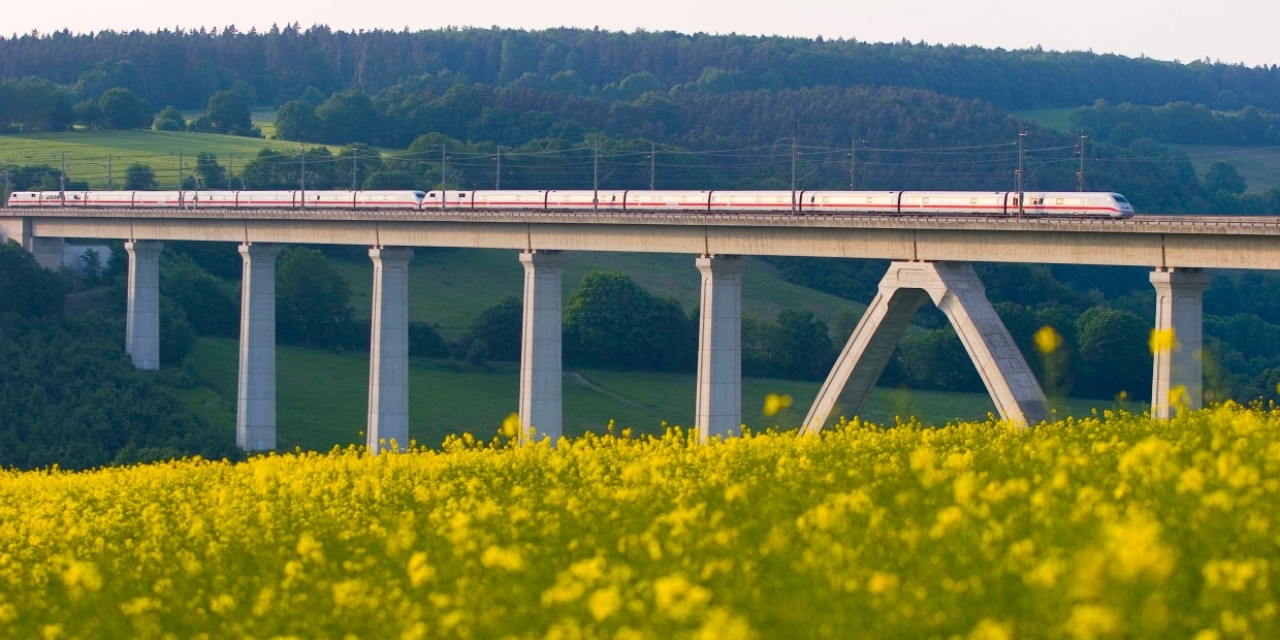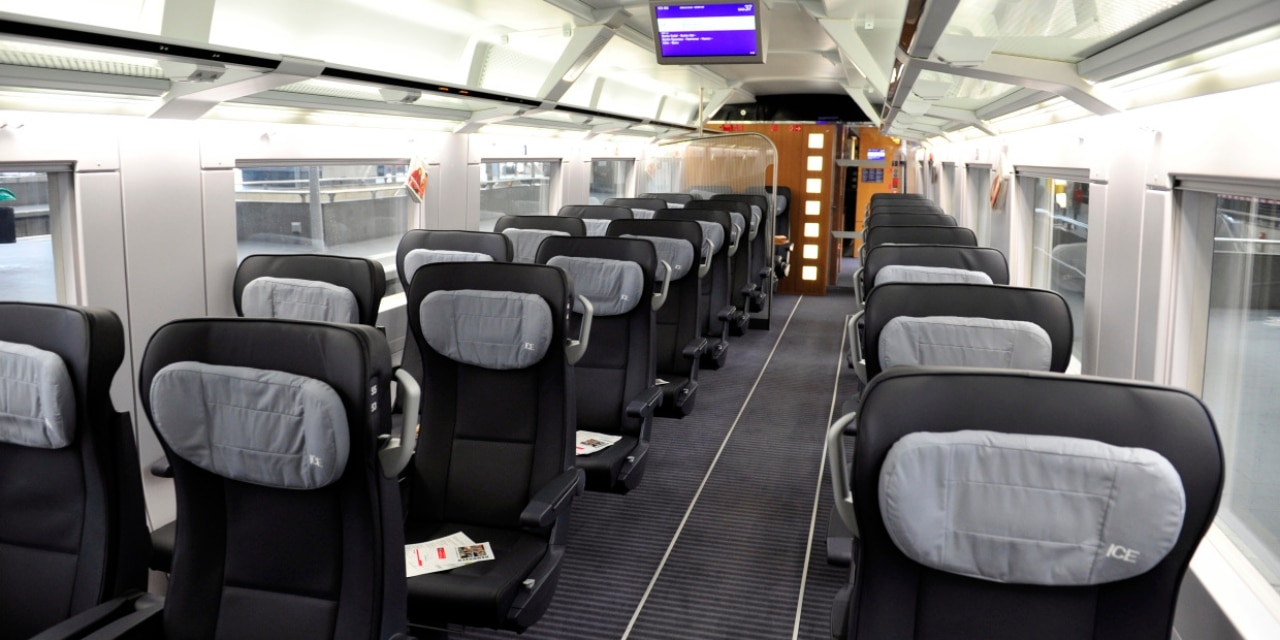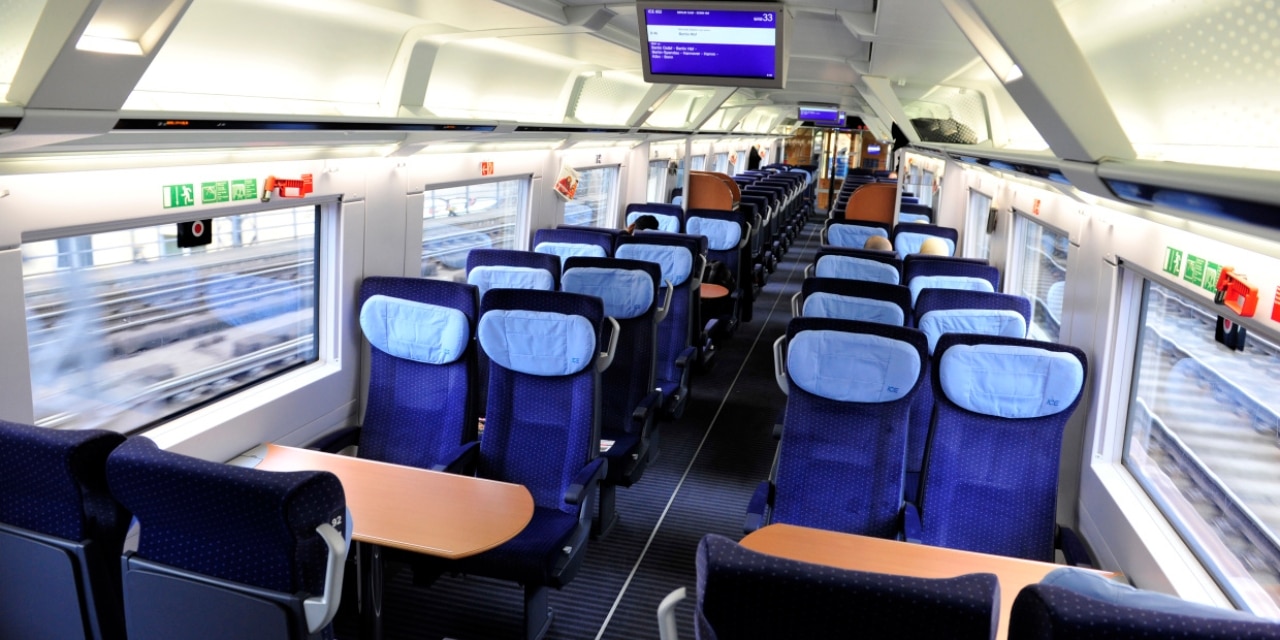The second generation of high-speed trains in Germany went into service in 1996. In contrast to the ICE 1, the ICE 2 was limited to six intermediate cars, one driving trailer and one power car. This design allowed two trains to be coupled to form a double train.
The train could therefore be used flexibly with double heading on high-demand services and with half the seat capacity on lines with lower passenger volumes. The operational design of the ICE 2 also allowed the two train sections to be split and continue to different destinations. This enabled more direct services without having to changing trains. For example, two ICE 2 trains could cover the line from Berlin to Hamm as a double train, before splitting into two separate trains and continuing towards Essen/Düsseldorf and Hagen/Wuppertal respectively.
The ICE 2 featured characteristic nose covers on the power car and driving trailer. They concealed the coupling to minimise drag when travelling at up to 280 kilometres per hour. All ICE 2 trains received a comprehensive modernisation from 2011. This involved an expansion of the passenger information system to a total of six monitors per carriage and the addition of grab handles to the new seats.
Facts, figures and data
- Start of operations
- 1996
- Number of trains
- 44
- Number of carriages
-
6 intermediate cars, 1 driving trailer
- Number of seats
-
381
- Train length
-
205 m
- Train weight (empty)
-
418 t
- Maximum speed
-
280 km/h
- International operation
- -

